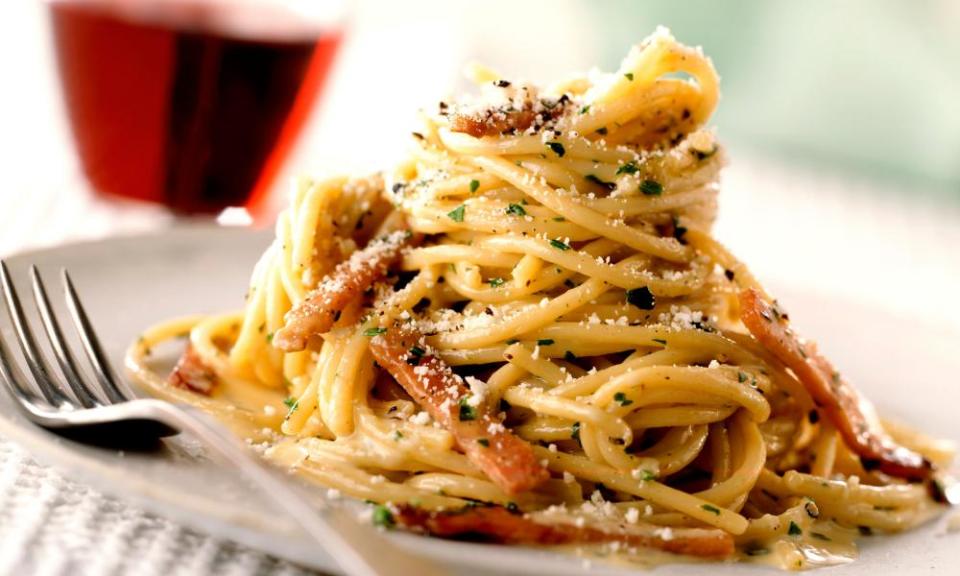'Stop this madness': NYT angers Italians with 'smoky tomato carbonara' recipe

The New York Times has cooked up a controversy in Italy after tinkering with the recipe for the classic Roman dish pasta carbonara.
Called “Smoky Tomato Carbonara”, the recipe, by Kay Chun, was published by NYT Cooking. To be fair to Chun, she did premise her version of the recipe by saying that “tomatoes are not traditional in carbonara, but they lend a bright tang to the dish”.
But it wasn’t just the tomatoes: the recipe replaced guanciale with bacon, “since it’s widely available and lends a nice smoky note”, and used parmesan cheese instead of pecorino.
The indignation began among passionate foodies on social media – “This isn’t remotely close to being a carbonara. Stop this madness,” wrote one – before attracting the ire of top Italian chefs and the farmers’ association Coldiretti, which described “Smoky Tomato Carbonara” as the “tip of the iceberg” in the “falsification” of traditional Italian dishes.
This isn’t the first time an interpretation of an Italian recipe has sparked outrage, with foreigners often mocked for adding pineapple to pizza or chicken to pasta. But that the recipe was published by the NYT came as a shock.
“I follow the NYT on Instagram and thought it was a fake,” Alessandro Pipero, a chef in Rome known as “the carbonara king”, told Corriere della Sera. “It would be like putting salami in a cappuccino or mortadella in sushi. OK, fine, but then let’s not call it sushi, similarly with this one – carbonara with tomato is not carbonara. It’s something else.”
Coldiretti was sterner in its reaction. “The real risk,” the association said in a statement, “is that a fake ‘made in Italy’ dish takes root in international cooking, removing the authentic dish from the market space, and trivialising our local specialities which originate from unique techniques and territories.”
Coldiretti added that pasta carbonara was one of the most “betrayed” Italian recipes abroad. But the association is keeping track of plenty of others.
“Caprese is served with industrial cheese instead of mozzarella di bufala or fior di latte, while there are also cases of pasta with pesto served with almonds, walnuts or pistachios instead of pine nuts.”
The NYT also triggered outrage in the UK in 2018 after publishing a recipe in which it described the yorkshire pudding, a roast dinner staple, as a “large, fluffy pancake” that was excellent for “breakfast, brunch, lunch and dessert any time of the year”.

 Yahoo Finance
Yahoo Finance 